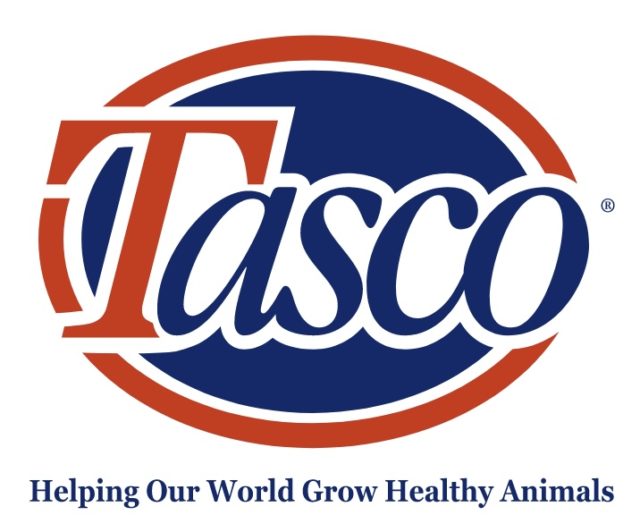Rules, rules, rules. Use only low-potassium forages, don’t feed buffers, feed lots of wheat straw, chop straw to 1-inch particle size, thoroughly blend all ration ingredients into a TMR, move cows onto the pre-fresh diet 21 days before calving, check urine pH for a minimum of eight cows, at four to six hours after feeding, every week.
Target the lowest possible urine pH the kidneys can produce, keeping urine pH of every cow below 6. Those are just some of the strict rules you’ve probably been told are necessary to improve the calcium status of dairy cows at calving.
What if you have a small dairy farm and some of these recommendations are barriers preventing you from implementing negative DCAD nutrition? What if you don’t ever have enough close-up dry cows to mix a separate TMR for them? What if you don’t have access to good-quality wheat straw or can’t process it “just right” to satisfy Goldilocks? What if you don’t want to or are not set up to check urine pH on a regular basis? What if you don’t want to split cows into far-off and close-up groups with different rations? All are reasonable questions and reasonable scenarios, especially for smaller dairies. And like with the management of almost anything, creative people can find compromises to achieve a desired end goal.
If you are leery of implementing a DCAD program at all because of the various strict recommendations you may have heard, don’t be. Many DCAD “rules” can be bent or broken and still enable you to implement successful negative DCAD nutrition, improve the calcium status of your cows at freshening, and reduce the incidence of milk fever and subclinical hypocalcaemia that drain profit from the dairy. These examples are based on personal experience, and they are the long-term, cumulative result of a challenge once posed to me by a dairyman who was contemplating negative DCAD nutrition for his pre-fresh cows. He told me, “If we can figure out how to get the benefits I hear it will bring, without causing any extra work, I’ll give it a try.”
Negative DCAD pre-fresh nutrition involves feeding some sort of anionic (chloride or sulfate) supplement, in amounts sufficient to create a state of metabolic acidosis, as indicated by urine pH less than 8. If you feed enough anionic supplement to achieve a moderate degree of metabolic acidosis, as indicated by urine pH between 6 and 7, research shows that you will realize just as much practical benefit as you would with extreme metabolic acidosis (such as urine pH below 6) while taking a simpler, safer approach. With the more moderate DCAD approach, you feed less anionic supplement, and it is not critical to regularly check urine pH with great intensity. Right there, a few of those more onerous rules can be thrown right out the window.
So let’s create a couple of scenarios for doing this simple, moderate DCAD on a smaller scale. Suppose a dairy never has more than a few dry cows at any given time. This dairy splits far-off from close-up cows, sending far-offs out to pasture for a few weeks and bringing cows back to a “maternity” pen about three weeks before expected calving. (We’ll also look at a “what if” for those who don’t want two groups of dry cows.) There are hardly ever enough close-up cows to justify making a separate, small batch of TMR. And nobody wants to take the time to make another mix anyway.
Case No. 1
Maternity housing consists of either a pen with a fenceline feeder or a paddock with a feed trough out in it. Cows are fed a little silage every day with a bucket loader. They get 5 pounds per head of grain mix with some vitamins and minerals, tossed out over the silage. They have free-choice access to a round bale of hay and maybe some nibbles of grass if they’re out in a paddock. How do you get started with negative DCAD?
First, locate an anionic supplement. There are several commercial products on the market. Your feed supplier can get them. They come in 50-pound bags, and they vary greatly in DCAD strength (from fairly dilute and easy to use in a top-dress situation to super-concentrated and needing to be thoroughly blended into a pre-mix with other feeds before presentation to the cow).
You’ll initially have to get help with some basic calculations to come up with a ballpark estimate of the amount of anionic supplement to feed. The feed guy where you get your dry cow feed likely will know how to do the calculations. Based on how much silage and grain you say the cows eat each day, he’ll estimate how much of that free-choice hay your cows will also eat to finish filling them up. And regardless of whether you actually analyze the silage and hay for mineral content (one of the rules) or if you just guess at that too (bending the rule), he’ll estimate the amount of anionic supplement it will take to make the total diet slightly negative (-50 to -100 mEq per kilogram) in DCAD.
Let’s say you do all that and the calculations call for 2 pounds per cow per day of a commercial anionic supplement, as a beginning amount. So tomorrow, when you feed the silage and throw the grain on top, throw on your 2 pounds per head of anionic supplement. If you chose one of the more dilute anionic supplements, you can feed it straight from the bag, with no need to have the feed mill make a premix for you.
If you want to mix into the grain or silage a little with your hand, go for it. Maybe you won’t need to stir it at all, just so long as it’s all gone by feeding time tomorrow. You’ll figure it out. Top-dressing the anionic supplement this way bypasses several rules but gets the anions into the cows just the same. One caution, though. If you’ve been convinced to try one of the very concentrated anionic supplements that require less than 1 pound per cow per day, you probably don’t want to try breaking that “feed a thoroughly mixed TMR” rule.
Feed this way for three days, and then check urine pH from a cow or two. Yikes – there’s that urine pH rule. Don’t worry; this testing chore won’t go on for long. You just have to find out, in the beginning, if your guesstimates of supplement feeding rate were somewhere in the ballpark. Urine pH between 6 and 7 is where you want to be. That leaves lots of safety room on either side of your metabolic acidosis target. So if you check one or two cows and urine pH is above 8, you need to feed a little more anionic supplement. If urine pH is less than 6, you need to feed a little less. It’s not hard to figure out.
Once you get your daily dose of anionic supplement dialed in this way, forget about the urine pH until one of these things happens: 1) You have a couple of cases of milk fever. This is a good indication that something has changed, and urine pH has become too high; or 2)Cows don’t clean up their silage, grain and anionic supplement like they have been. This is a clue that urine pH has become extremely low. If you observe either of these, you can either satisfy your biological curiosity by checking urine pH again or just adjust the amount of anionic supplement accordingly and keep paying attention to the cows. The simplicity of this style of DCAD management can get you nearly total benefits, without so much hassle, and very little extra work.
So what rules have you been able to ignore and still have less milk fever, less fresh cow disorders, better appetite after calving and better early lactation milk? No straw, no straw processing, no TMR, little or no laboratory testing of forages, minimal urine pH testing at the beginning and perhaps no pH testing for months thereafter.
Case No. 2
Want to break one more rule, a big one? Like “never feed the lactating cow TMR to close-up cows because it likely contains sodium- or potassium-based buffers?” Well, what would be the difference between feeding the lactation TMR compared to feeding silage plus top-dressed grain like in Case No. 1?
One difference is: The TMR will have grain, vitamins and minerals already mixed in, which is no problem. That actually saves you from needing a dry cow grain mix on the place. But the buffer that is likely in the lactating cow TMR will mean you have to feed more anionic supplement than you would without the buffer. This doesn’t mean that good results can’t be had. Let’s say, for example, you normally feed your lactating cows a half-pound of sodium bicarbonate buffer per day, blended into their 100 pounds or so of TMR.
If you feed 30 pounds per head of that same TMR to the close-ups, and still let them finish filling up on that free-choice bale of hay, it will take about 35% more anionic supplement to acidify them than it would without the buffer. This is not a huge increase. If the convenience for you justifies the extra cost of more supplement, that’s the trade-off you expect when you compromise. There is no nutritional or biological reason why the end results, in terms of cow health and productivity, won’t be just as good. And the economics are still very attractive.
Case No. 3
Let’s say you don’t want to or can’t split your dry cows into far-off and close-up groups. You can still apply some of the simple feed delivery techniques described above and just feed the anionic supplement for the entire dry period. It’s yet another compromised rule compared to the ideal, but it’s still much better than not doing negative DCAD. Anionic supplements can be fed for the whole dry period without any harm to the cows – you’ll just have more cost from feeding the supplement for more days per cow. But return on investment with negative DCAD nutrition is so great that even feeding the anions for the entire dry period still yields a positive net return.
Draw from the experiences of these other folks in making some compromises of your own. Use your good, old dairy farmer ingenuity and figure out how to make simple negative DCAD nutrition doable in your situation, with your set-up. Even if you deviate from the strict protocols, which experts have publicized as the “perfect” negative DCAD management, you can still apply this amazing nutritional concept and achieve noticeable, pleasing benefits. You’ll make some money, and you’ll be a lot happier with the way your cows look and feel.






